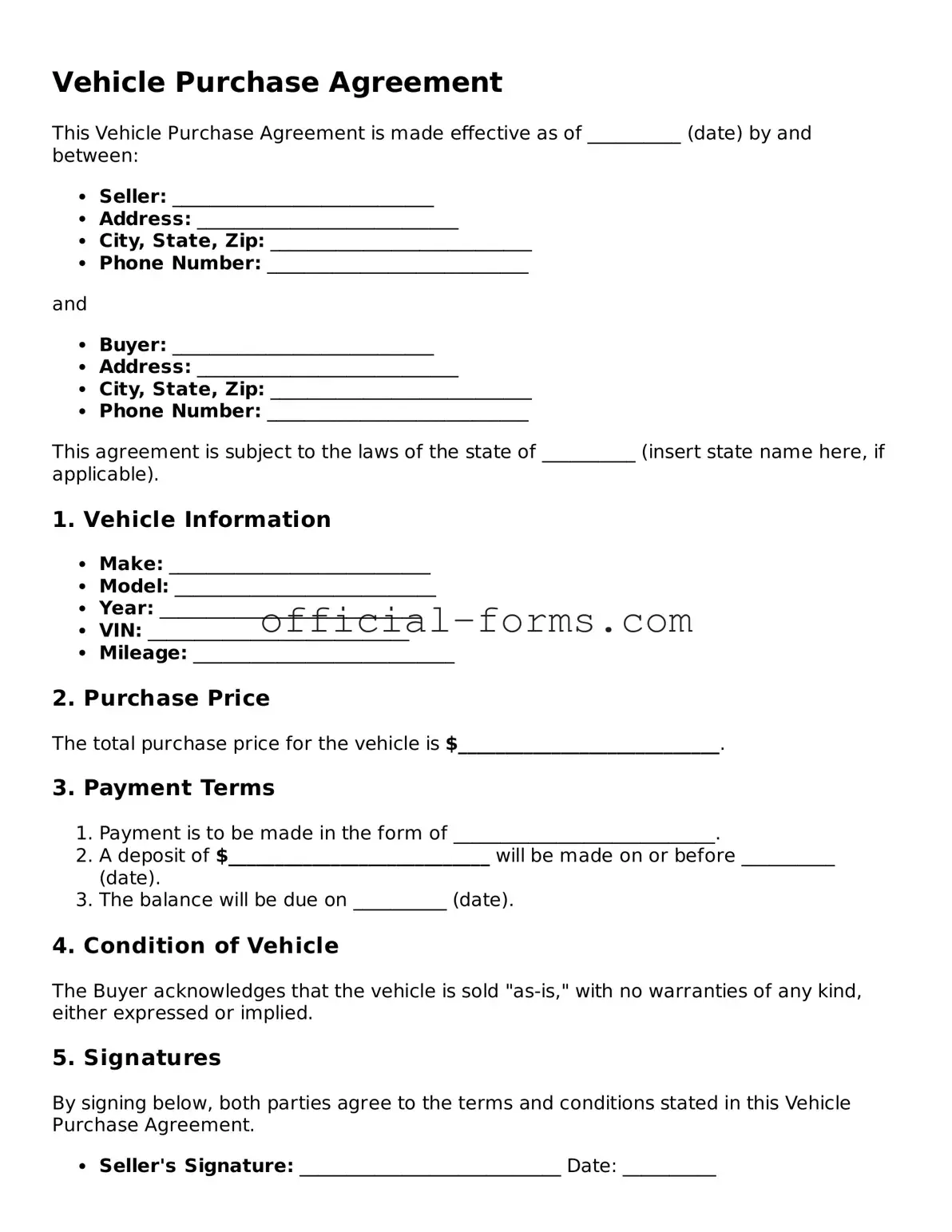Attorney-Verified Vehicle Purchase Agreement Template
A Vehicle Purchase Agreement is a legal document that outlines the terms and conditions involved in the sale of a vehicle between a buyer and a seller. This agreement serves to protect both parties by clearly stating the details of the transaction, including the vehicle's price, condition, and any warranties. Understanding this form is essential for ensuring a smooth and transparent vehicle purchase process.
Open My Vehicle Purchase Agreement Now
